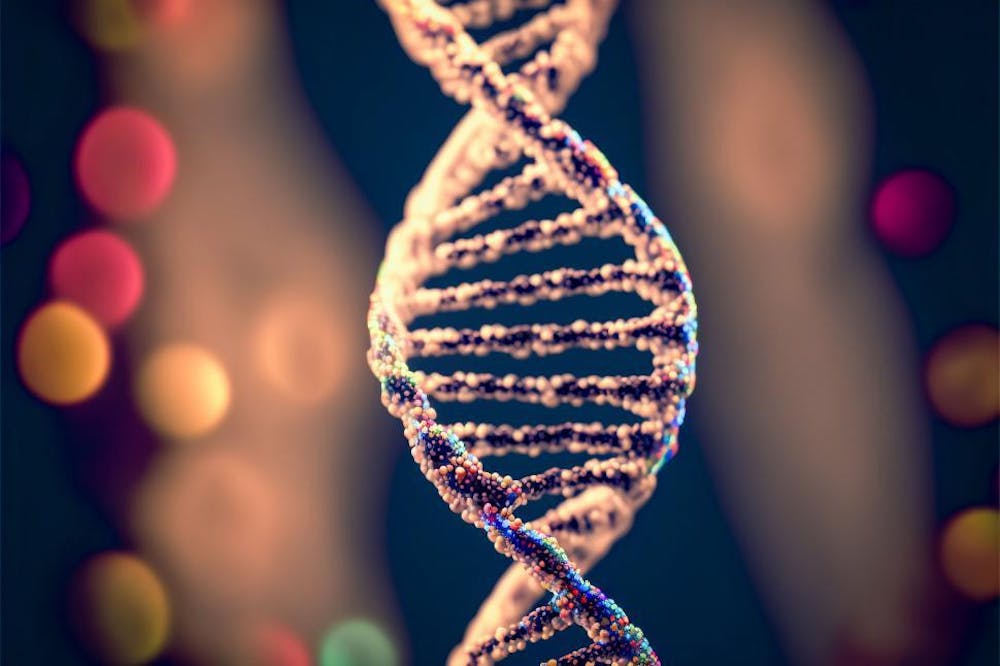On August 30, 2017, Kymriah became the first gene therapy — a type of treatment that introduces genetic material to an individual’s cells — to be approved by the Food and Drug Administration (FDA). Kymriah is a treatment for individuals with acute lymphoblastic leukemia, and modifies the individual’s T cells, which help the immune system fight off diseases, by inserting a gene that codes for a chimeric antigen receptor (CAR). The newly created CAR T-cells can then recognize and kill the leukemia cells. As of October 2024, there are more than thirty FDA-approved gene therapies, spanning a diverse array of diseases such as certain cancers, hereditary disorders and chronic diseases.
There are multiple ways that new genetic material can have therapeutic value. One of the most direct ways is through the replacement of a gene. Some genes code for proteins that impact the body’s growth, metabolism and regulation. Gene therapy’s transfer of a functioning gene to the patient’s cells that originally had a non-functioning version can then provide the instructions necessary to synthesize the essential proteins.
Other gene therapies involve the CRISPR/Cas9 system, a gene-editing technology that allows for the precise manipulation of DNA sequences. CASGEVY, one of the latest gene therapies to be approved by the FDA and the first to involve CRISPR/Cas9, is a treatment for individuals with sickle cell disease or beta-thalassemia. CASGEVY first collects patients’ hematopoietic stem cells and promotes the production of fetal hemoglobin by suppressing the expression of a gene related to red blood cell production with CRISPR/Cas9. With more fetal hemoglobin, the number of functional red blood cells increases, lowering pain levels for sickle cell disease and alleviating symptoms of beta-thalassemia.
Treatments can be either in vivo, which requires the genetic modification of cells without being removed from the body, or ex vivo, where the cells are removed, genetically altered and then reintroduced to the body. A significant part of gene therapy research focuses on the delivery systems regarding genetic material to targeted cells for both in vivo and ex vivo treatments. The term “vector” labels a vehicle that delivers the DNA. Viral vectors are some of the most common vectors, as the innate efficacy of the virus’s protein shell, also known as the capsid, is capitalized upon.
The vectors are adjusted to prevent the possibility of carrying disease and instead carry inserted genetic material. Examples of viral vectors include adeno-associated virus (AAV), adenovirus and lentivirus. Viral vectors have shown a level of successful delivery, with multiple FDA-approved gene therapies employing these vehicles: LUXTURNA, a therapeutic for patients with hereditary retinal dystrophy, and ZOLGENSMA, which treats spinal muscular atrophy in children, to name a few.
However, using viral vectors as gene therapy delivery systems can have harmful consequences. Viral vectors have previously triggered hemophilia patients’ innate and adaptive immune responses, hindering successful delivery. A clinical trial showed that the capsids of the AAV vectors triggered a response from the CD8+ T cells of some participants, leading to an increase in liver enzymes that could suggest inflammation or damage to the liver.
With the CRISPR/Cas9 system specifically, researchers have run into difficulties fitting the CRISPR/Cas9 system into an AAV, as well as a problem that arises from one of AAV’s strengths: the ability to provide long-term expression. Unlike gene therapies, which approach treatment through gene replacement or gene suppression, CRISPR/Cas9 only needs to be used once for the sequence of DNA to be altered and protein expression affected. Therefore, continued expression of the gene-editing machinery could lead to unwanted genetic changes.
One response to these concerns is the push to study non-viral vectors, with nanotechnology emerging as a frontrunner. Xizhen Lian, an assistant research scientist at the Johns Hopkins Whiting School of Engineering’s Institute for NanoBioTechnology and the Johns Hopkins School of Medicine, compares the two delivery systems.
“Gene therapy has been traditionally delivered by viral vectors. Although they demonstrate high transfection efficiency, they are highly immunogenic and have caused cancer and even patient death in the clinical trials. Nanotechnology is versatile in chemical and biological properties and can be optimized via modular engineering. Nanoparticles trigger less immune response and have the unique advantage of enabling redosing of gene therapy, which viral vectors are incapable of,” Lian wrote in an email to The News-Letter.
Lian was the lead author of a study examining the performance of lipid nanoparticles that delivered mRNA to hematopoietic stem cells of sickle cell models. The study further demonstrated the promise of nanotechnology as the mRNA within the lipid nanoparticles were able to reach multiple cell types for their “potential [fetal hemoglobin] reactivation and conversion from sickle to non-sickle alleles.”
“Sky is the limit for nanoparticle application in gene therapy…Currently, there are numerous clinical trials of nanoparticle-mediated gene therapy approaches to treat diseases in liver, blood, eye, etc., and the field is still growing very fast,” Lian wrote.
Lian also outlined several barriers and areas of future research regarding the role of nanotechnology as a vehicle.
He wrote, “Major roadblocks include the low delivery efficiency by nanoparticles, immunogenicity that could be detrimental to critical patients, inaccessibility of nanoparticle delivery in many tissues (e.g., central nervous system, muscle, kidney), and storage and transportation challenges, especially for mRNA therapeutics and vaccines.”





